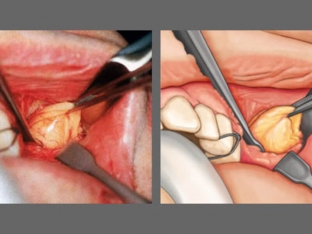Among the many surgical interventions that are performed in modern aesthetic surgery, operations that help get rid of fat deposits are especially popular. Excess weight is often not only a cosmetic defect, but also a serious threat to the physical and even mental health of the patient. Adipose tissue in the human body is even in the cheek area, and these accumulations of fat are called Bish's lumps, in honor of the French anatomist who discovered them. The operation to remove these fatty comedians allows you to make your face thinner, and give more expressive and refined outlines to its oval. On estet-portal.om, read today about the features of the operation to remove Bish's lumps.
Features of the operation to remove Bish's lumps
The operation to remove Bish's lumps is a minimally invasive surgical intervention. Bish's lumps can be removed under local anesthesia, but in some cases the patient may need general anesthesia. Quite often, the removal of Bish's lumps is combined with other operations in the face, such as skin tightening, the introduction of zygomatic implants, and others.
The choice of surgical technique for removing Bish's lumps depends on individual characteristics each patient.
Depending on the desired result of the patient who wants to remove Bish's lumps, the plastic surgeon decides whether it is necessary to combine several surgical techniques.
Bish's Lumps:
- anatomical features and functions of Bish's lumps;
- surgical technique for removing Bish's lumps;
- rehabilitation after surgery to remove Bish's lumps.
Anatomical features and functions of Bish's lumps
Knowledge of the anatomical and physiological features of Bish's lumps plays an important role for the operating surgeon. Bish's lumps are accumulations of adipose tissue, consisting of three lobes and enclosed in capsules. Bish's lumps are located between the chewing and superficial muscles of the face around the duct of the parotid salivary gland. The main function of Bish's lumps – facilitating the act of sucking in infants by reducing muscle friction during meals and giving tone to the cheeks. With age, the need for this function is lost, so at an older age, Bish's lumps can be removed.

Surgical technique for removing Bish's lumps
The operation to remove Bish's lumps can be carried out in two ways: the traditional method or using endoscopic equipment. Since the encapsulated fat lumps are located between the skin of the face and the buccal mucosa, access to them can be as follows:
- internal access: the buccal mucosa is dissected for 1.5-2 cm from the side of the oral cavity, the muscles are stratified, Bish's lumps are pulled up, exfoliated from the surrounding tissues and removed along with their membrane;
- external access: Bish's lumps are removed through an incision in the skin. This access is preferable in cases where the operation to remove Bish's lumps is an addition to another plastic surgery on the face.
Rehabilitation after surgery to remove Bish's lumps
The rehabilitation period after the operation to remove Bish's lumps is quite short: the patient can go home on the day of the operation. Wounds in most cases are sutured using absorbable materials. If non-absorbable sutures were used – stitches are removed after 5-8 days.
For 2-3 days after the operation, swelling of the facial tissues may persist, as a result of which the cheeks will appear even wider than before the operation, but after a few days the effect after the removal of fat lumps will be obvious.
After the operation, the patient is recommended to minimize the load on the facial muscles and eat food that does not require long and intensive chewing for several weeks. The final result after the operation can be assessed after 5-6 months, after the complete healing of the cheek tissues.






Add a comment